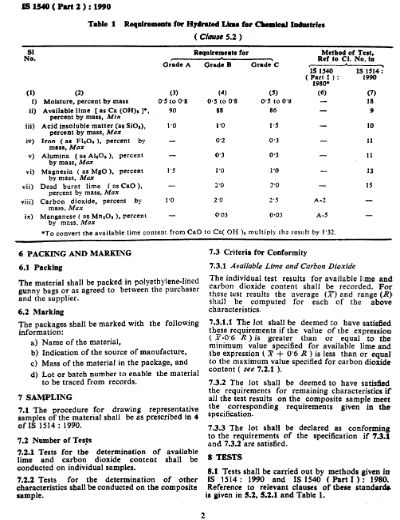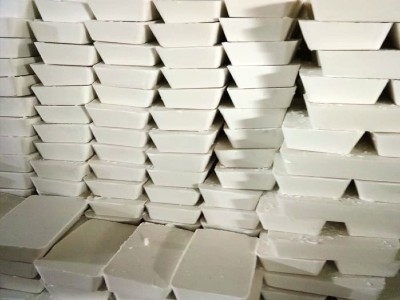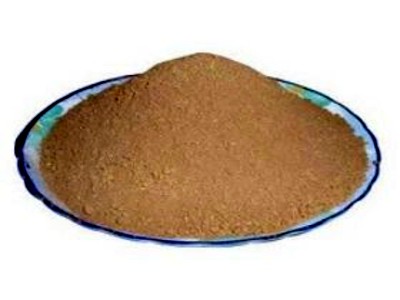Introduction
Lime is a calcium-containing inorganic mineral composed primarily of oxides, and hydroxide, usually calcium oxide and/or calcium hydroxide. It is also the name for calcium oxide, which occurs as a product of coal-seam fires and in altered limestone xenoliths in volcanic ejecta. The word lime originates with its earliest use as building mortar and has the sense of sticking or adhering.
These materials are still used in large quantities as building and engineering materials (including limestone products, cement, concrete, and mortar), as chemical feedstocks, and for sugar refining, among other uses. Lime industries and the use of many of the resulting products date from prehistoric times in both the Old World and the New World. Lime is used extensively for wastewater treatment with ferrous sulfate.
The rocks and minerals from which these materials are derived, typically limestone or chalk, are composed primarily of calcium carbonate. They may be cut, crushed, or pulverized and chemically altered. Burning (calcination) of these minerals in a lime kiln converts them into the highly caustic material burnt lime, unslaked lime or quicklime (calcium oxide) and, through subsequent addition of water, into the less caustic (but still strongly alkaline) slaked lime or hydrated lime (calcium hydroxide, Ca(OH)2), the process of which is called slaking of lime.
When the term is encountered in an agricultural context, it usually refers to agricultural lime, which today is usually crushed limestone, not a product of a lime kiln. Otherwise, it most commonly means slaked lime, as the more dangerous form is usually described more specifically as quicklime or burnt lime.
Types Of Lime

Quick Lime
Quicklime is produced by heating crushed limestone to around 1,100 degrees Celsius in a shaft furnace or rotary kiln. The heating of limestone releases carbon dioxide, leaving calcium oxide (CaCO3 produces CaO + CO2). After heating, the quicklime is crushed and then milled to the appropriate fraction.
Hydrated Lime Powder
Product is processed under the visionary guidance of skilled professionals using high grade mineral that is sourced from authentic vendors in the market and ultra-modern technology in compliance with set industrial norms. We offer this product in different packaging options for safer deliveries.


Lime Stone Dust
Crushed limestone dust is a waste material from the production of concrete aggregate by crushing quarried limestone rocks. The dust is usually less tan 1% of the aggregate production. Although it is coarser than common cementing materials such as Portland cement, coal fly ash and ground blast furnace slag, it is fine enough to cause many problems during materials handling and disposal. Laboratory results have indicated that crushed limestone dust can be used to produce self-consolidating concrete (SCC) with properties similar to those of SCC containing coal fly ash.
Lime Stone
Limestone is a sedimentary rock composed primarily of calcium carbonate (CaCO3) in the form of the mineral calcite. It most commonly forms in clear, warm, shallow marine waters. It is usually an organic sedimentary rock that forms from the accumulation of shell, coral, algal, and fecal debris.

Packaging Details
| Size | Price | Packaging |
|---|---|---|
| 50 Kgs | Rs. 7 ~ 15 | HDPE Bags |

In the lime industry, limestone is a general term for rocks that contain 80% or more of calcium or magnesium carbonate, including marble, chalk, oolite, and marl. Further classification is done by composition as high calcium, argillaceous (clayey), silicious, conglomerate, magnesian, dolomite, and other limestones. Uncommon sources of lime include coral, sea shells, calcite and ankerite.
Limestone is extracted from quarries or mines. Part of the extracted stone, selected according to its chemical composition and optical granulometry, is calcinated at about 1,000 °C (1,830 °F) in different types of lime kilns to produce quicklime according to the reaction: combined with water, called slaking, so hydrated lime is also known as slaked lime, and is produced according to the reaction. Dry slaking is slaking quicklime with just enough water to hydrate the quicklime, but to keep it as a powder; it is referred to as hydrated lime. In wet slaking, a slight excess of water is added to hydrate the quicklime to a form referred to as lime putty.
Because lime has an adhesive property with bricks and stones, it is often used as binding material in masonry works. It is also used in whitewashing as wall coat to adhere the whitewash onto the wall.






















